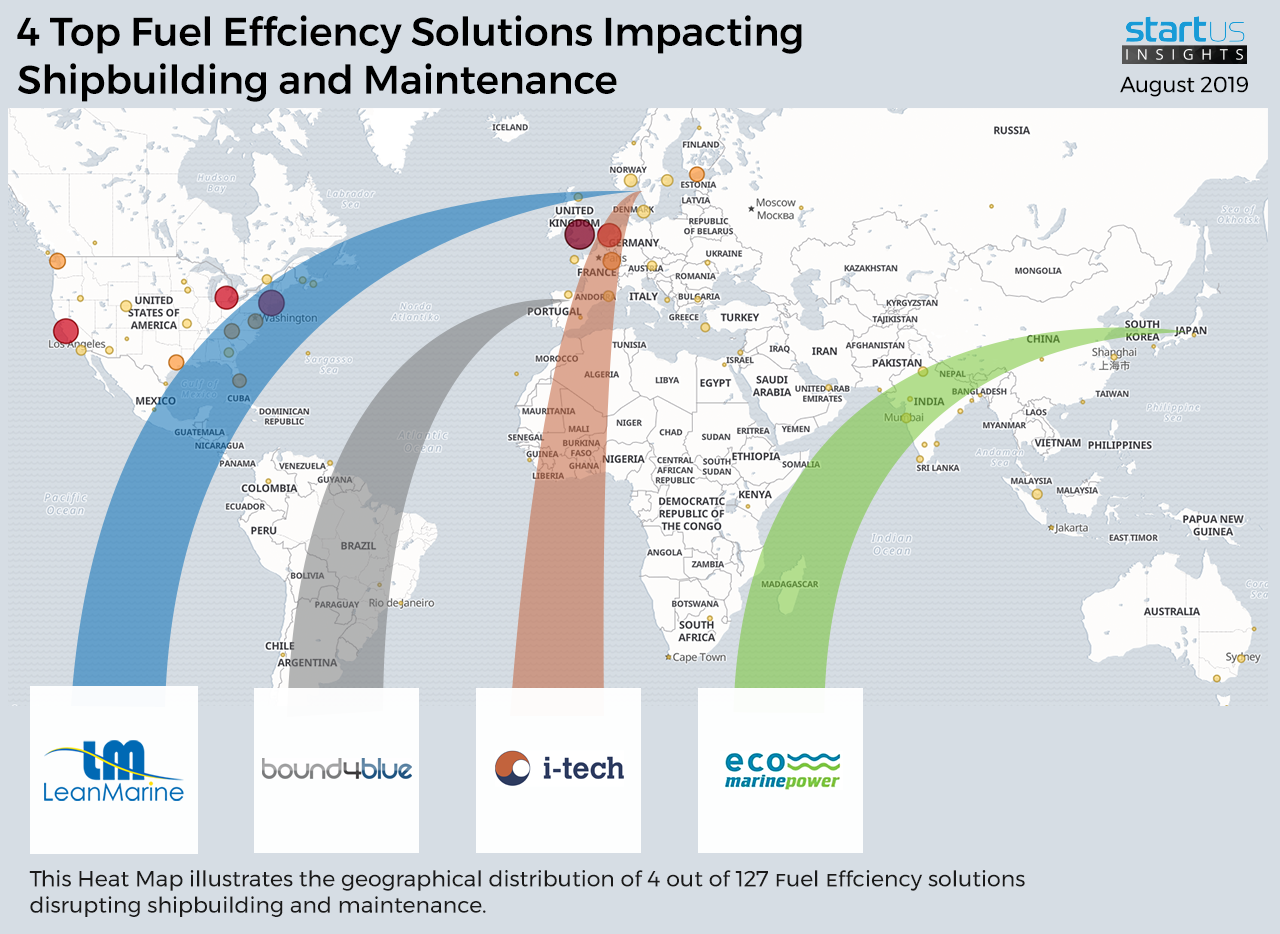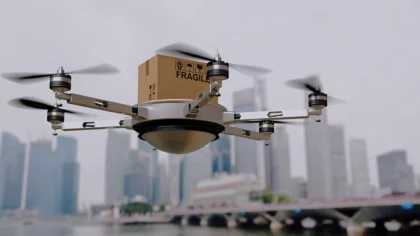Our Innovation Analysts recently looked into emerging technologies and companies working on solutions for the shipbuilding industry. As there is a large number of companies working on a wide variety of solutions, we want to share our insights with you. This time, we are taking a look at 4 promising Fuel Efficiency Solutions.
Heat Map: 4 Top Fuel Efficiency Solutions
Using our StartUs Insights Platform, covering 1.116.000+ companies, we looked at innovation in the field of fuel efficiency for shipbuilding. For this research, we identified 127 relevant solutions and picked 5 to showcase below. These companies were chosen based on a data-driven scouting approach, taking into account factors such as location and technology among others. Depending on your specific criteria, the top picks might look entirely different.
The Global Heat Map below highlights 5 companies. Moreover, the Heat Map reveals regions that observe a high activity and illustrates the geographic distribution of all 127 companies we analyzed for this specific topic.
I-tech – Advanced Materials & Biotechnology
The shipbuilding industry is constantly looking for energy efficiency measures to make its vessels more competitive in the global shipping sector. The use of advanced materials for building ships’ outer coating, structural parts, hulls, and more enables ships to be lighter, create less drag and, thus, use less fuel.
Swedish company I-tech, currently listed on Nasdaq Nordic, specializes in biotechnology products for the marine and shipbuilding sectors. One of their solutions is based on an organic non-metal molecule, Selektope, which they integrate into marine paints and coatings, to tackle antifouling by stimulating the receptors of any barnacle larvae as they come into contact with it on the surface of a ship.
Bound4blue – Supplementary Propulsion Systems
During long-haul trips and generally, while at sea, minor changes to the way ships operate can have a noticeably positive impact on their performance. These are usually systems that use wind or other renewable energy sources to engage main engines in a more efficient manner.
Spanish maritime company Bound4blue designs and develops a wing-sail system that is installed onboard the vessels, which is capable of delivering fuel savings from 5% to 40% depending on the boat’s size, the number and structure of wing-sails, the cruising speed, and other factors.
Lean Marine – Software Solutions
Hardware modifications are not the only way of increasing the fuel efficiency of ships. Getting onboard propulsion equipment to work efficiently and adapt to the surrounding environment during trips can save costs as well. The software adjusts power usage according to the changing conditions while continuously gathering and analyzing energy usage data.
Swedish company Lean Marine designs and develops a software package for fuel usage optimization called FuelOpt, which allows ship operators to simply enter their desired energy consumption and speed. The software takes care of it from there, optimizing the engine and propeller power to ensure the maximum efficiency factoring in the change in weather conditions, load or other parameters. It simultaneously records and logs the most important operational parameters and continuously sends them to engine control.
Eco Marine Power – Solar Energy
Generating power from sources other than burning fuel naturally results in fuel savings, which is why harnessing solar energy is becoming an increasingly viable solution to improve fuel efficiency. Systems of battery panels onboard large vessels might seem to generate an insignificant amount of power, but given that it integrates with the vessel’s smart power management systems, they are capable of saving energy.
Japanese company Eco Marine Power develops Aquarius, a MAS+Solar installation kit, which includes an array of durable solar panels that are able to withstand harsh sea conditions. In combination with the data analytics software and administration panels, they integrate this kit into the vessel’s power management systems. Solar energy, in this case, is used not only as an additional propulsion system, but to power devices and units that are supplementary to marine operations, like lighting, backup generators, and internal electrical equipment.
What About The Other 123 Solutions?
While we believe data is key to creating insights it can be easy to be overwhelmed by it. Our ambition is to create a comprehensive overview and provide actionable innovation intelligence so you can achieve your goals faster. The 5 fuel efficiency solutions showcased above are promising examples out of 455 we analyzed for this article. To identify the most relevant solutions based on your specific criteria, get in touch.









